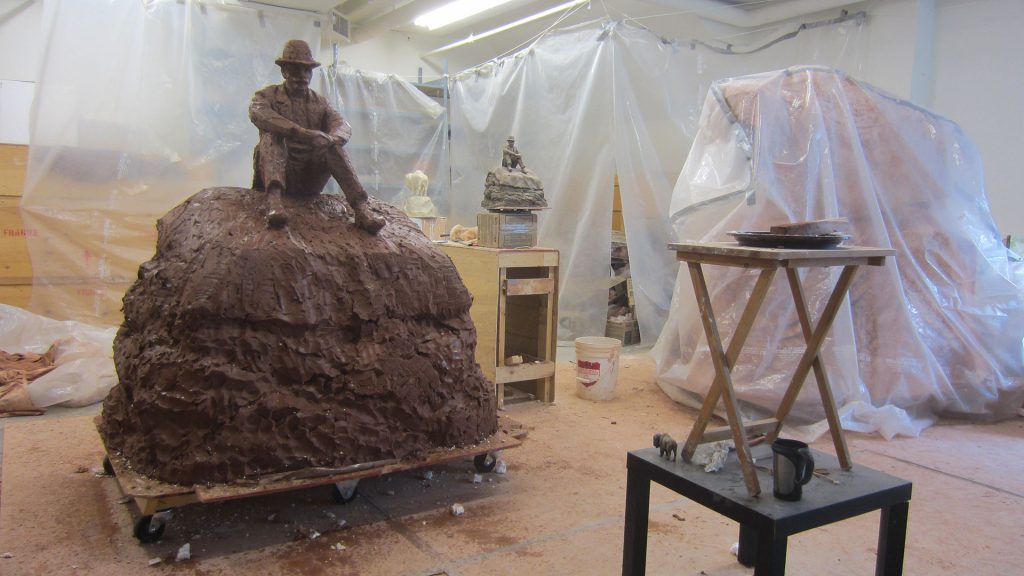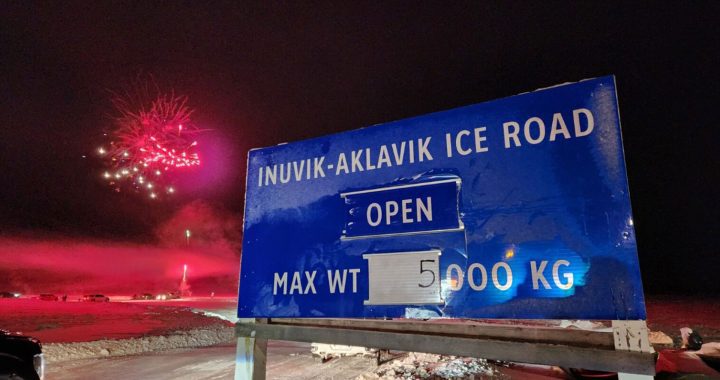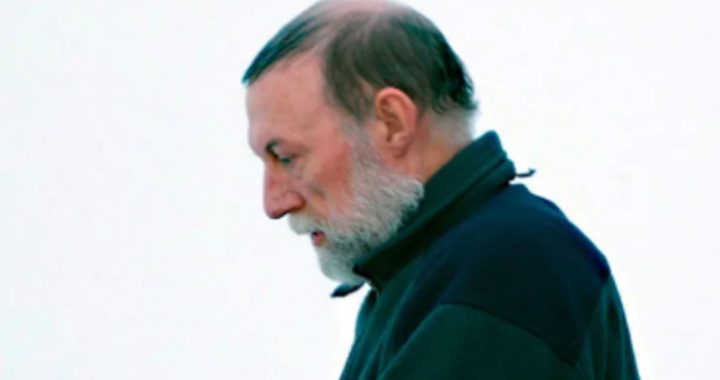
A piece of art depicting Indigenous relations in the city of Edmonton has been decommissioned.
The piece called the Buffalo and the Fur Trader was created by a non-Indigenous artist as a part of a larger infrastructure project.
The artwork features a statue of a large buffalo and a fur trader.
“I am thrilled,” says Dawn Marie Marchand about the decision to shelve the statue. “I was not looking forward to the blow back.”
Marchand is a Cree Métis artist and founder of the Blue Horse Gallery.
She was a part of the Wicihitowin (Cree/Saulteaux term for working together or helping each other) art circle that originally opposed the artwork to the Edmonton Arts Council (EAC).
“We already had issues with (the) Rossdale (neighbourhood) as EPCOR (a local utility company) had discovered graves, and so the idea that the artwork wouldn’t reflect the history of that area was problematic,” Marchand tells APTN News.
“The man sitting on the buffalo hides seemed like a triumph of colonization.”
Rossdale was recently the subject of national attention when city council considered a proposal to build a gondola station on a culturally important site for First Nations and Métis people.
Marchand and other Indigenous artists did not agree with an early concept of the buffalo that was white and featured wings.
“Our immediate response was that it was just wrong. The idea of a white buffalo with wings doesn’t exist within our cosmology.”
Do no harm
The City of Edmonton released a statement late Wednesday saying, “Throughout the process, the city and the Edmonton Arts Council are acting from the principle of ‘do no harm.’ As previous discussions around the Government Centre LRT Station murals demonstrated, what matters is the immediate impact the artwork can have on the community.”
The city announced in June 2021 it would remove a mural and change the name of the LRT station that depicts former Catholic bishop Vital-Justin Grandin.
Grandin played a key role in the early residential school system.
After APTN published a story about the statue sitting in storage, artist Ken Lum says the city called him to apologize for years of not communicating and then told him his work would be decommissioned.
“I am seeking other institutions to take the work,” says Lum. “Not easy given their scale. If no taker is found, then the work will be scrapped and melted down.”
Lum also expressed regret at the loss of the opportunity to be able to discuss the statue and the role of public art with Edmonton’s Indigenous community.
Indigenous artists raised concern
At the time, concerns raised by Marchand and other Indigenous artists appear to have fallen on deaf ears at the EAC.
An earlier story by APTN said EAC was unable to confirm details of the extent of Indigenous consultation on the project.
“If they [EAC] would have listened to us in the first place, they would have saved a lot of money,” says Marchand.
Jaiymi Miller, the director of Indigenous Relations for the city, says her office agreed with the decision to decommission the work.
In an emailed statement, she said, “The City’s Indigenous Relations Office agrees that the original artwork, intended to be installed at the Walterdale Bridge, is not appropriate and should not be installed. The decision made by the City rests on the potential for the artwork to be misinterpreted as a celebration of colonization.”
Miller says in the 10 years since the artwork was commissioned, the city has grown in its knowledge about consulting Indigenous communities.
“Rossdale is the heart of our City, and its significance to Indigenous Peoples cannot be understated,” her statement added. “As a City, we should also reflect on the relationships forged with Indigenous Peoples in our early days that allowed for the growth and prosperity we enjoy as a city.”










